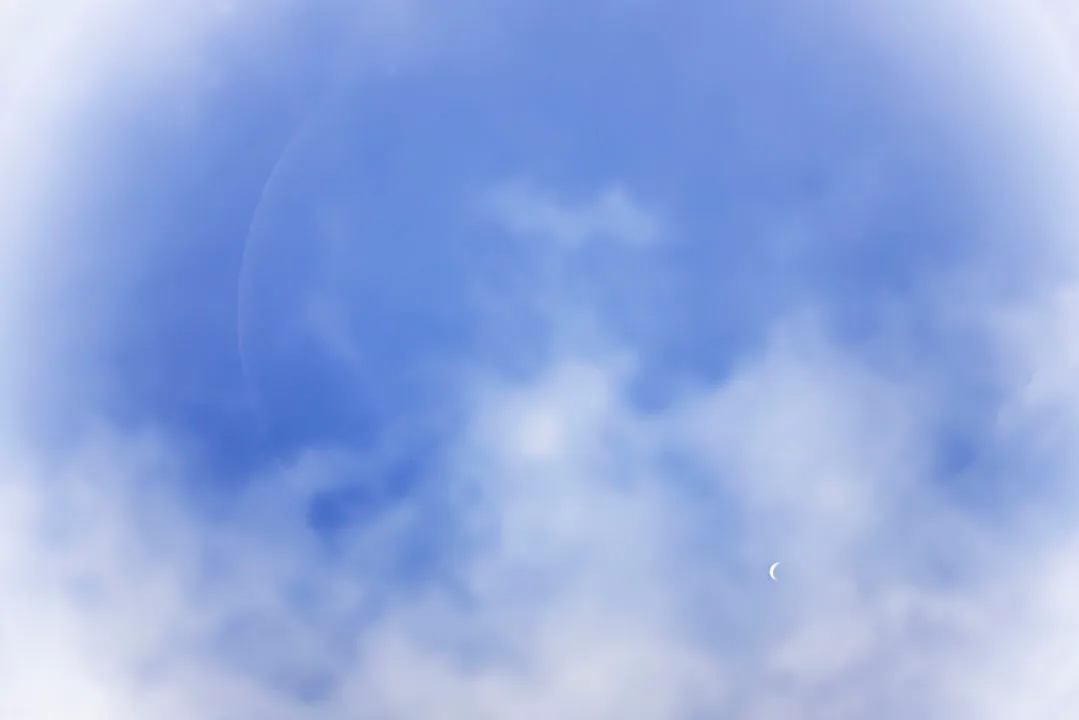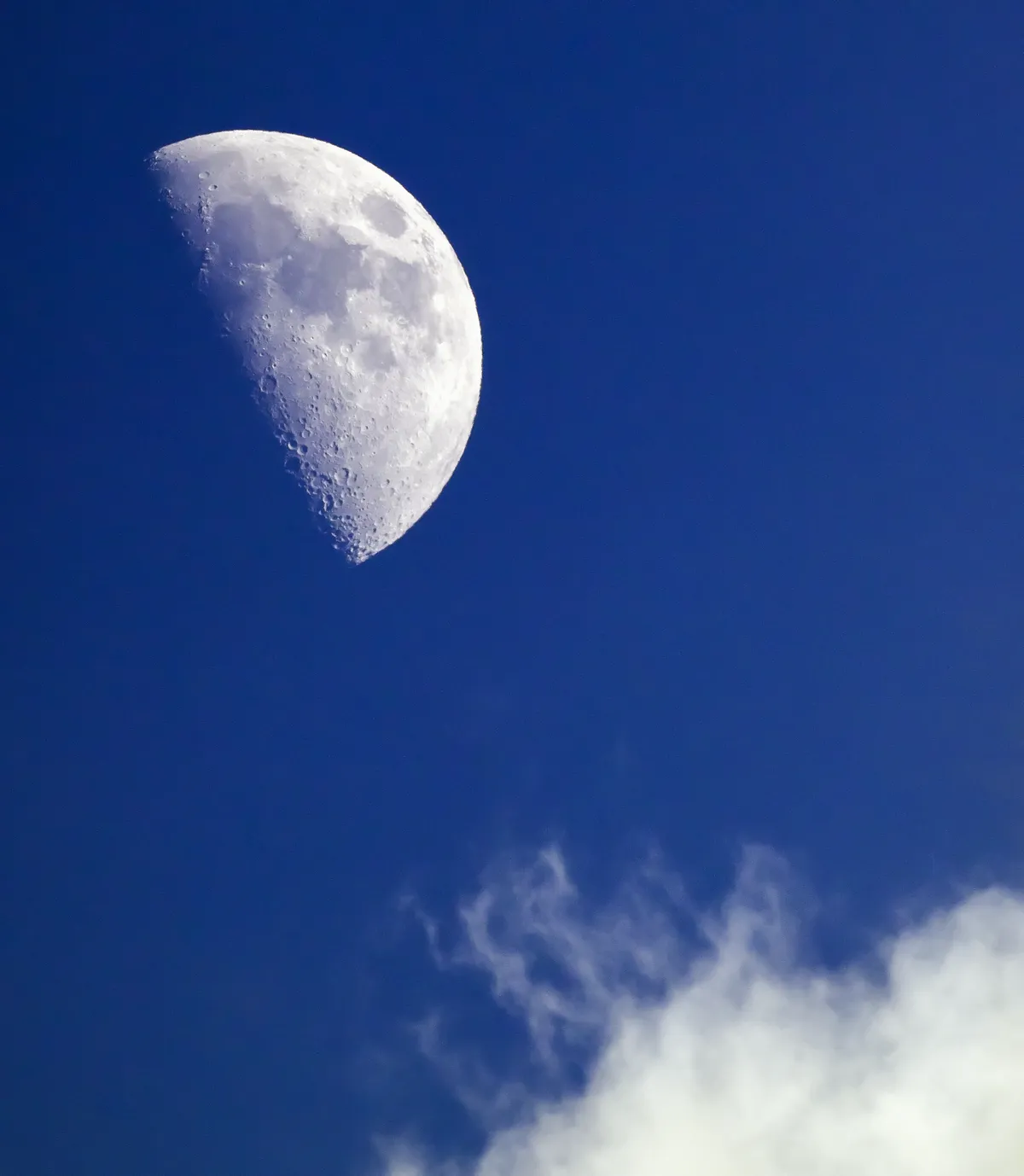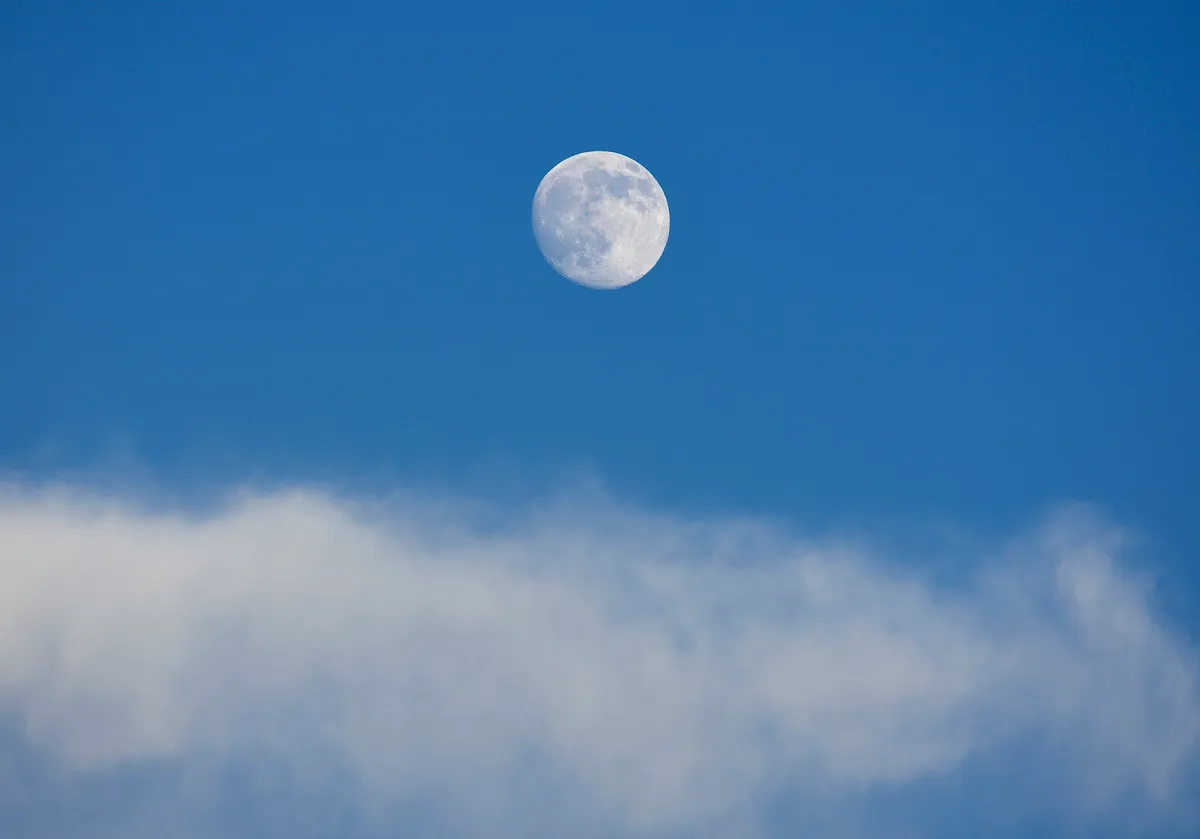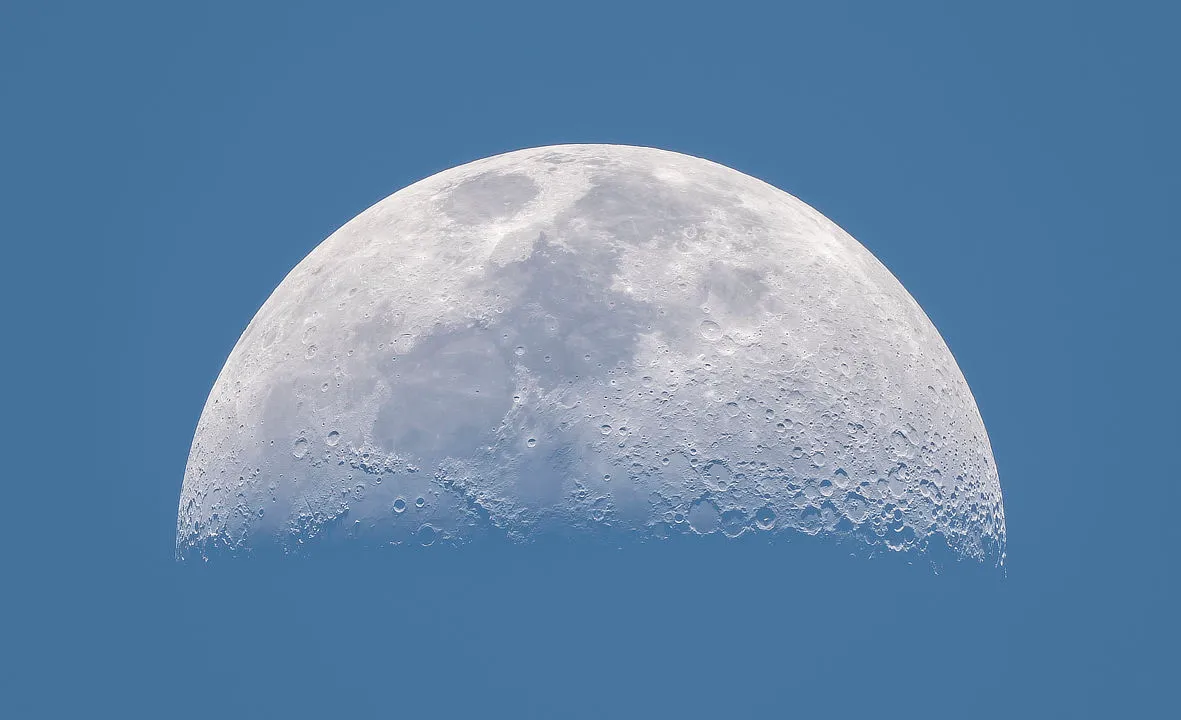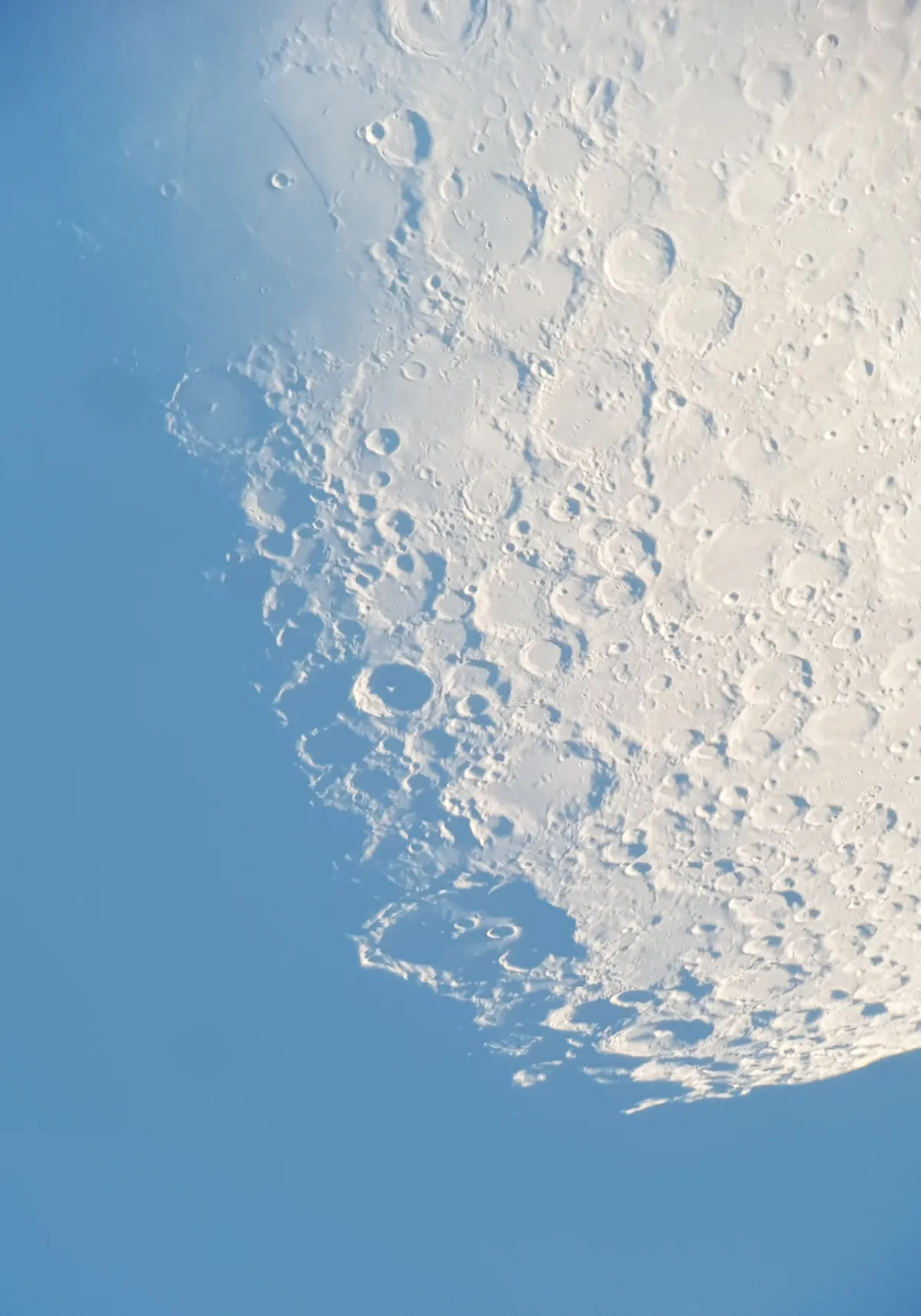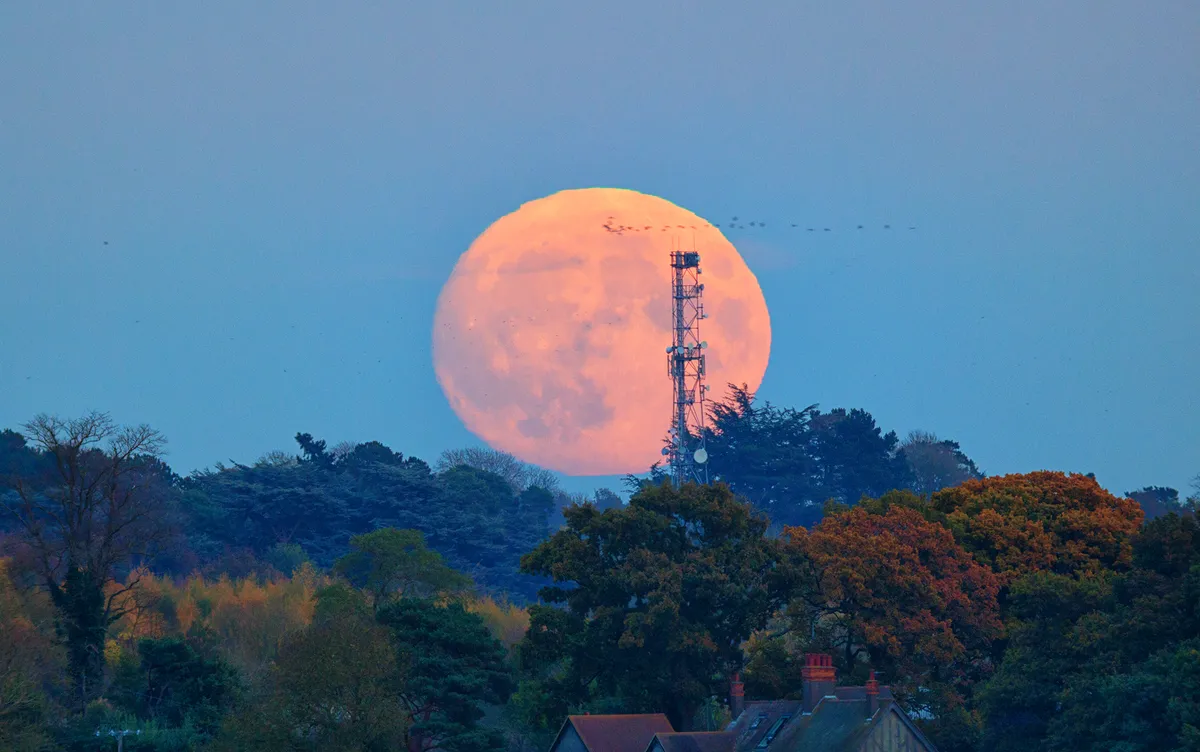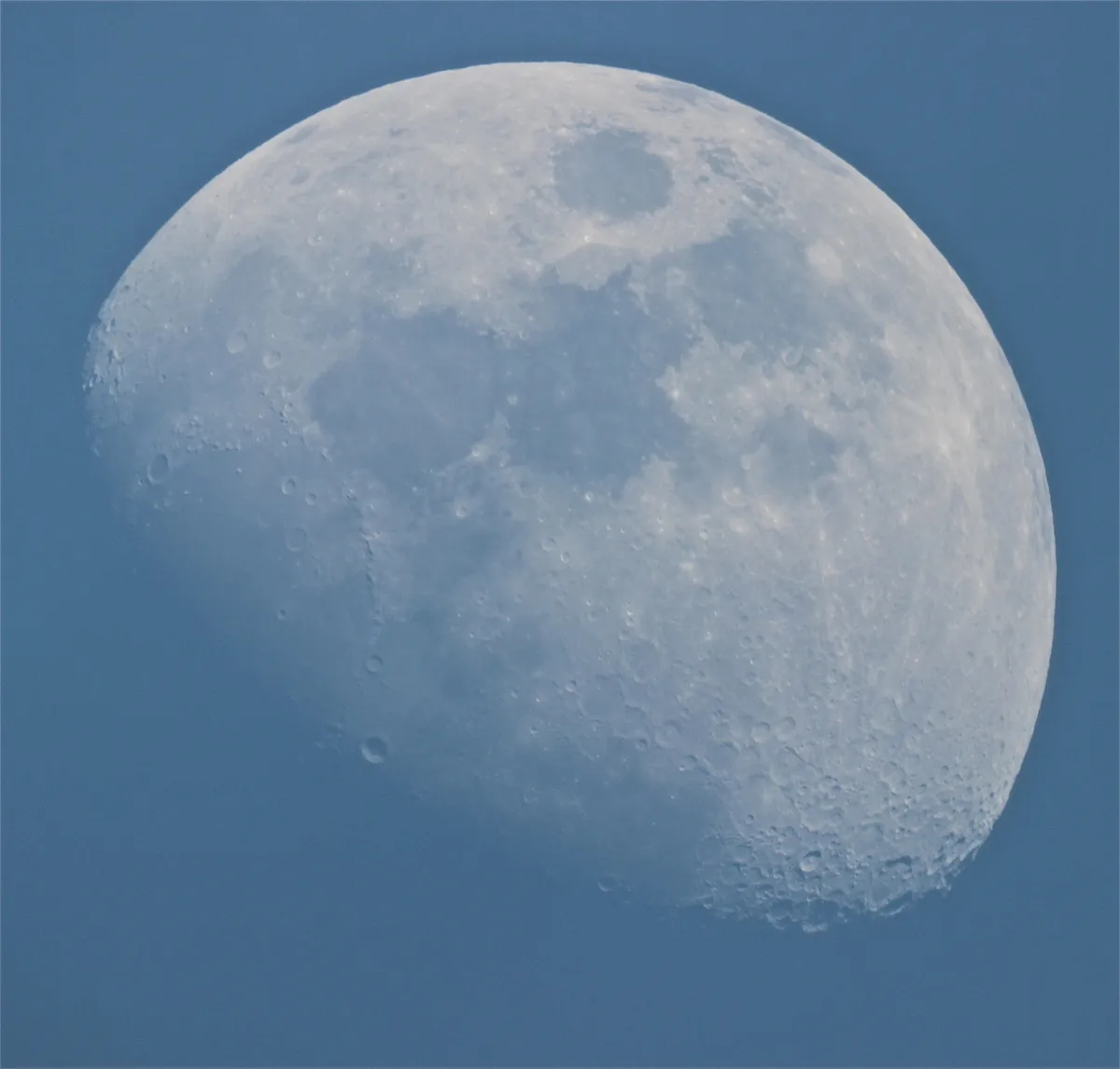Have you ever noticed that we can sometimes see the Moon during the middle of the day?
We often think of the Moon as a nighttime object: when the Sun goes down, the Moon comes up. But this is not the case.
You might see the Moon in the morning when the Sun has set, or you might even spot it on a crisp afternoon.
Pale and ghostly, a daytime Moon can catch you unaware, stopping you in your tracks.
Perhaps you were just not expecting to see it, or maybe the fact that the Moon can appear during the day has come totally out of the blue (quite literally - although not to be confused with a blue Moon, obviously!).
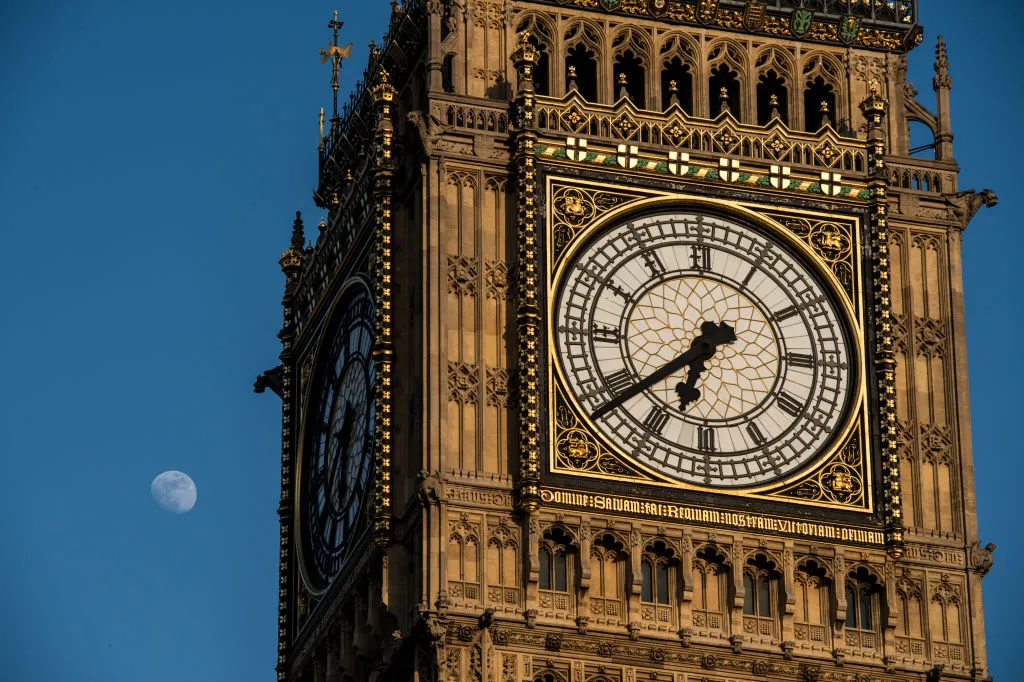
If you think about it, without the Moon appearing during the day, we wouldn't have solar eclipses, because these events rely on the Moon being visible in the sky at the same time as the Sun.
Below we'll reveal the mechanics of the lunar orbit and how you can spot the Moon during the day.
And for more on what to see before nightfall, read Lucie Green's guide to daytime astronomy.

Phases of the Moon
The Moon's orbit around Earth
The Moon is approximately one quarter the diameter of Earth and takes around 27.3 days to complete one orbit of our planet.
The orbital movements between the Earth, Sun and Moon means we see the Moon in its four principal phases throughout the month.
When the Moon is opposite the Sun, we see a full Moon and when it is between the Earth and Sun, it is a new Moon and not visible to us.

The two other phases, first quarter and last quarter, occur between new Moon and full Moon, which is when we see it gradually wax and wane.
Just like stars and planets, the Moon is there in the daytime too, moving within the celestial dome.
We can’t see the stars or planets with the naked eye during daylight hours because the sky is so bright, but the Moon’s apparent luminosity means we can easily spot it.
We won’t see it all the time though. For 12 hours a day the Moon is above the horizon, but its appearance may not coincide with daylight hours, so for any chance of observing, there is only a small 6-hour timeframe.
For more on this, read our guide to the phases of the Moon.
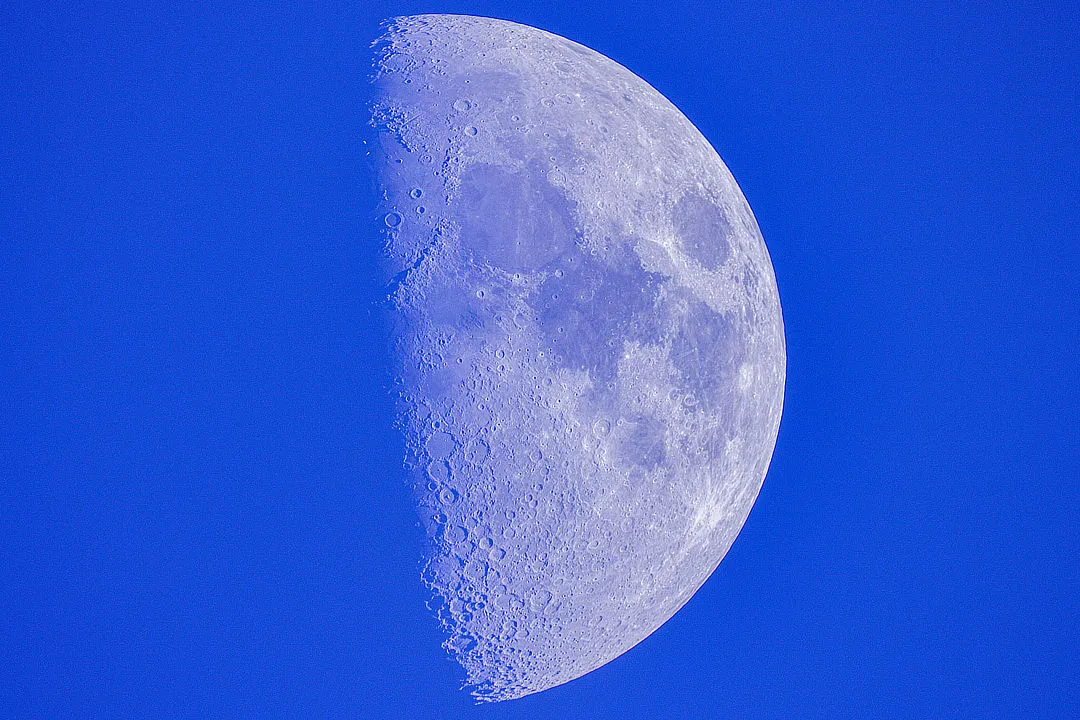
How to see the Moon during the day
The Moon's visibility also depends on which phase it is in. Near new Moon it is too close to the Sun to be seen and when it is near full Moon, it is only visible at night after the Sun sets.
Around 7 days before full Moon, look towards the eastern sky and you will see it rise in the afternoon. After full Moon, it will be visible in the morning sky.
Read our guide to find out when the next full Moon is visible.
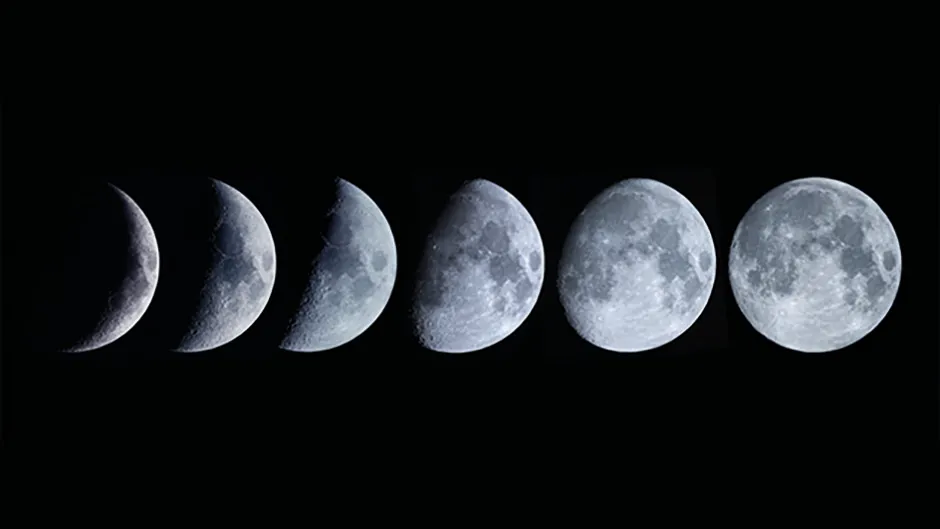
Using a pair of binoculars or a telescope, you will that it looks a bit different to the Moon we see at night.
If you do choose to observe the Moon at daytime, do so with caution as sunlight could damage your eyesight.
A safe technique is to make sure the Sun is hidden behind a large building or other structure, so you have no chance of catching it through your telescope or binoculars.
You might think the Moon's features during the daytime look 2D: just a pale imprint, a mere shadow. Craters, highlands and lunar maria will still be easy to identify but may not look as they do at night.
There are a few spectacular effects to look out for however, which you can see with the naked eye or through binoculars.

The Lunar X, an optical effect caused by light and shadows on the rim of three craters- Blanchinus, Purbach and La Caille creates the effect of a letter ‘X’
With a bit of patience, it can be spotted during the day through binoculars a few hours before first quarter.
This effect is one of many clair obscur effects that can be seen on the Moon.
Towards the end of the lunar month, another delightful phenomenon to see with your naked eye is earthshine. For more on this, read our guide Earthshine: what is is, how to see it.
Look to the eastern sky just before sunrise to see a rising crescent Moon. You may notice that you can see the rest of the moon glowing faintly.
This glow is caused by sunlight reflecting from Earth and is a spectacular sight for new and seasoned Moon lovers.
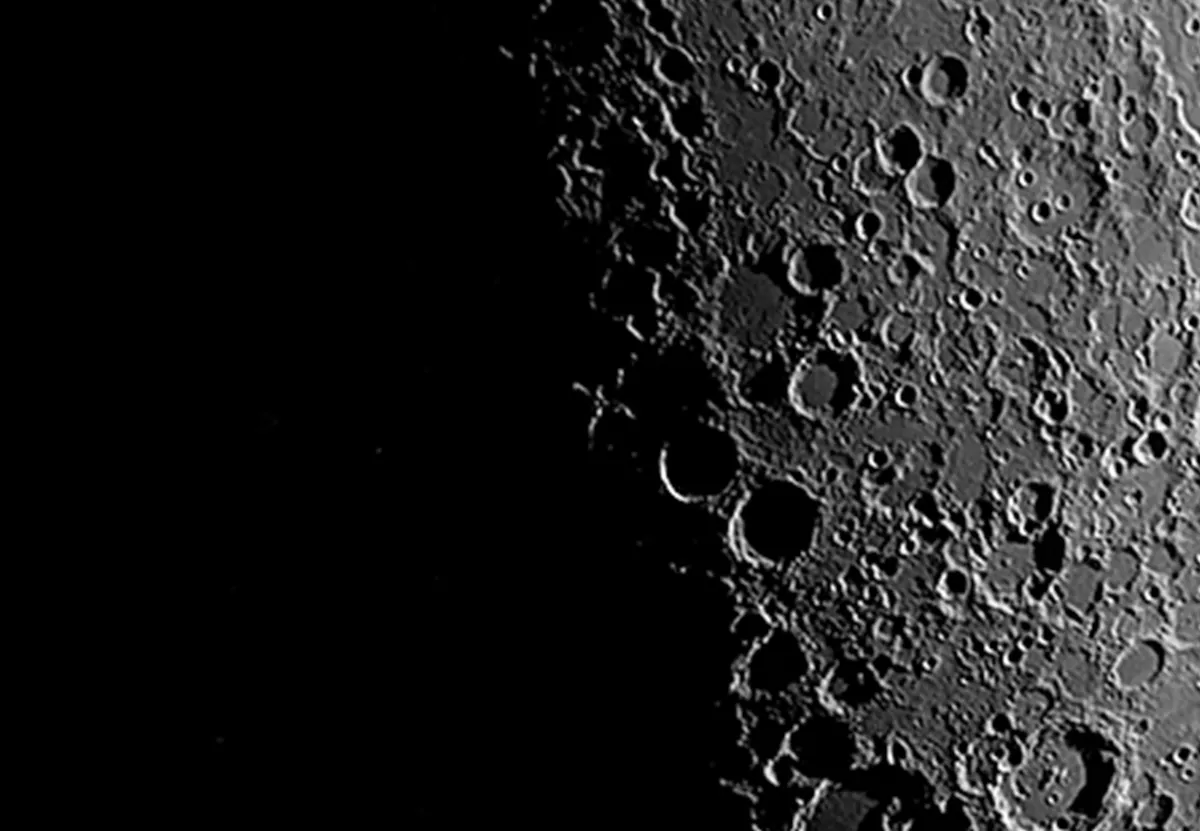
To take your next step in lunar observations, read our guide on how to observe the Moon.
Why not keep a diary so you have a record of when the Moon appeared during the daytime, and what you were able to see?
Read The Sky at Night presenter Paul Abel's guide for tips on keeping an astronomical log book.
Or you could mark on a calendar the phases of the Moon over the next few months so you know when it will be visible in the daytime.
Sign up to our weekly newsletter, which will deliver moonrise times for the week ahead straight to your inbox.
The Sun may be shining, but the Moon is the real 'star' in the sky.
